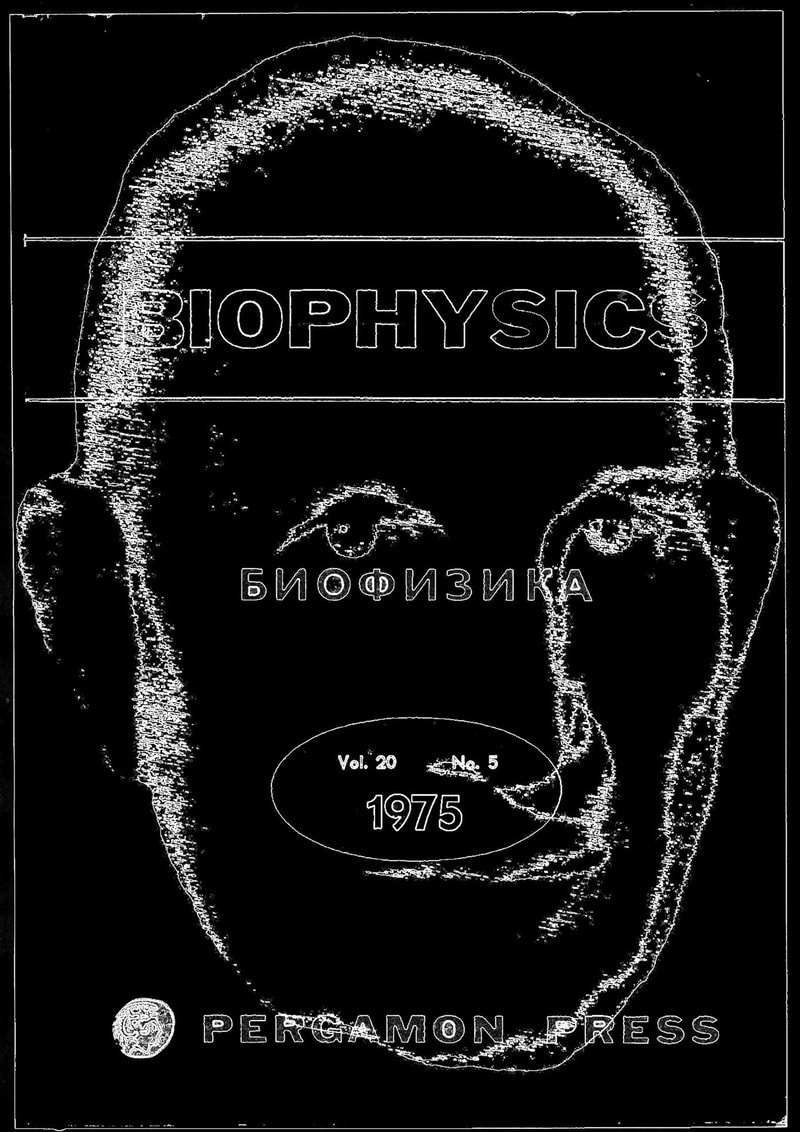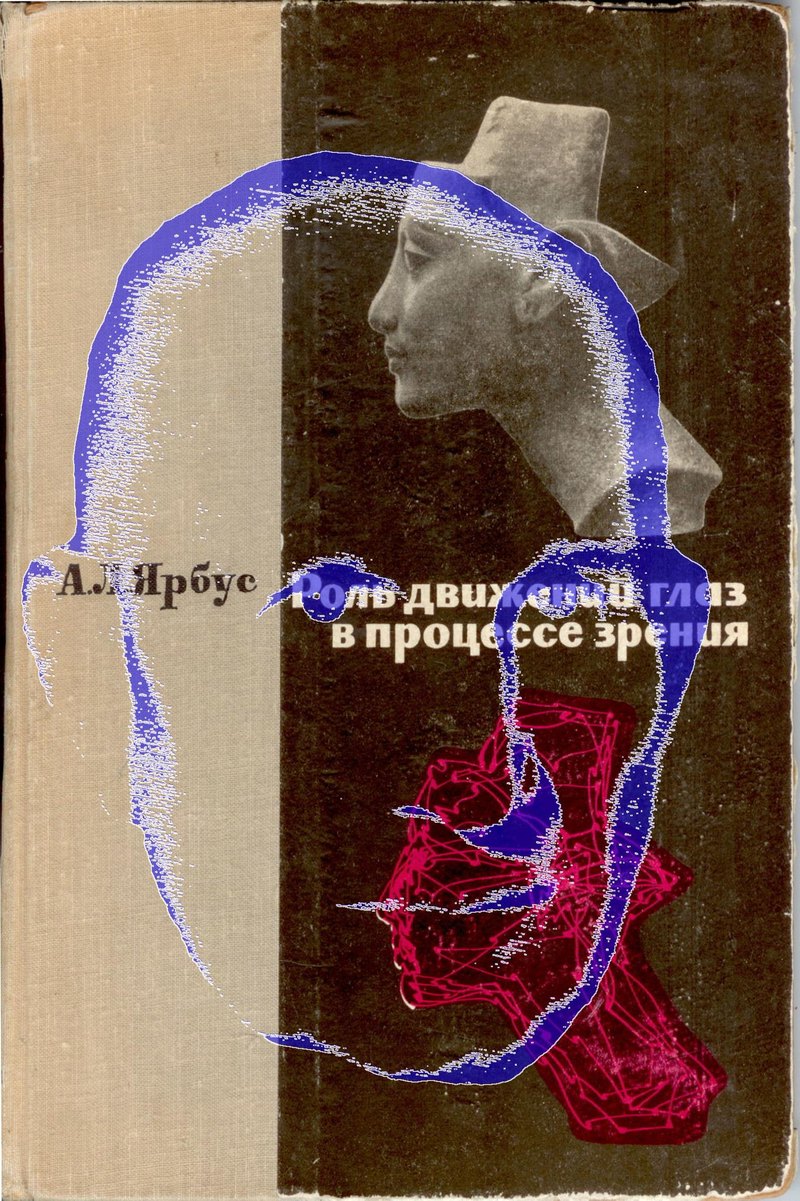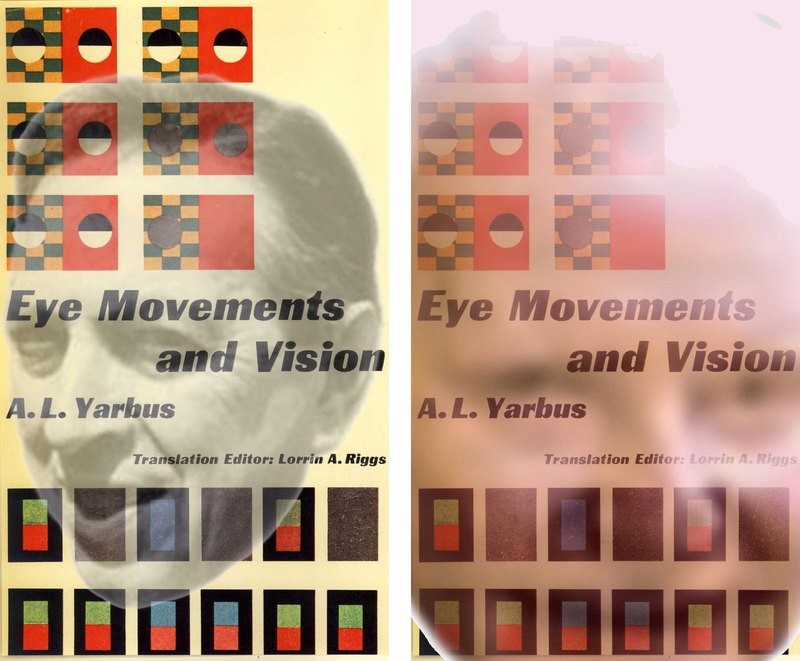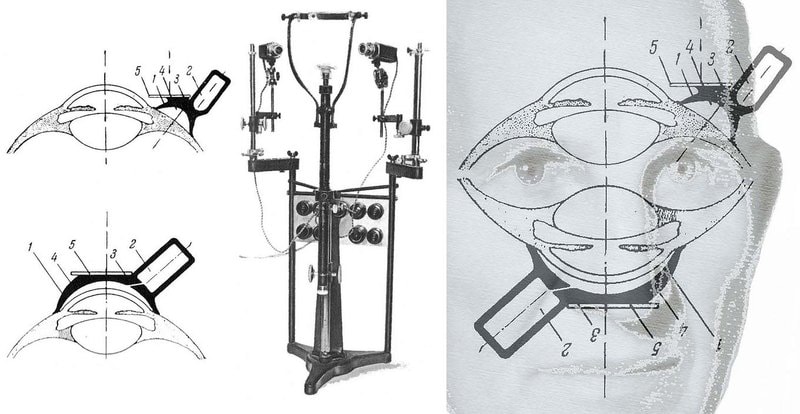Yarbus commenced his research on visual process in the late 1940s and continued for the rest of his career. In 1963 Yarbus integrated, analyzed, and systematized the results of all his investigations up to 1962 that were rather briefly presented in Biofizika and in a number of other Russian publications. (At that time all Russian journals had limitations on the number of pages per article). Performing this work, Yarbus created a manuscript that was almost simultaneously presented to the scientific society in the form of PhD Thesis (1964) and a book (1965).

Yarbus in Biofizika by Nicholas Wade
Articles from Biofizika by Yarbus were assembled and integrated in his book entitled Роль движений глаз в процессе зрения, the direct translation being The role of eye movements in vision. This monograph was the culmination of several years of research during which he developed a novel set of devices for recording and compensating for eye movements.

Yarbus and Роль движений глаз в процессе зрения by Nicholas Wade
An English translation of the monograph was published in 1967 and reprinted in 1971. The book was translated by Basil Haigh (1919-2005) and edited by Lorrin Riggs (1912-2008). Haigh had been in the Diplomatic Corps based in Moscow where he developed an interest in Russian neuroscience. He subsequently took an academic post at Cambridge University and translated many books from Russian including several by Luria.

Translator (Basil Haigh) and editor (Lorrin Riggs) by Nicholas Wade
Eye movements and vision consisted of seven chapters. The first and longest chapter was concerned with methods and this was followed by considerations of perception of retinal stationary objects (2), eye movements during fixation (3), saccades (4), scanning (5), pursuit (6), and eye movements with complex objects (7). Citations of the book rose sharply around 1969 and plateaued until the early 1990s, when they increased dramatically. The first phase was concerned with the methods and results from image stabilisation and the second with the growing interest in attentional effects of eye movements. In the context of the book, the attention shifted from chapters 1-3 to chapter 7, which addressed “The problem of eye movements during perception of pictures, during reading, during observation of optical illusions, and during comparison of distances”. The major impact of the book is now seen as the directed effects of scanning eye movements as a consequence of the instructions given: “Analysis of the eye-movement records shows that the elements attracting attention contain, in the observer’s opinion, may contain, information useful and essential for perception”.
The cornerstone of Yarbus’s research summarised in his monograph was the development of a method for accurately recording eye movements, using suction caps on the eyes. The caps developed by Yarbus allowed stable recordings of eye position over extended periods of investigation. Importantly, he developed devices that allowed images to be presented that moved with the eyes such that a stabilised retinal image could be presented. Wider recognition was to follow the translation of his book Eye movements and vision into English; it opened the eyes of many researchers to the originality of his methods and to the implications of his experiments.
Yarbus considered that his main contributions were the novel methods of image stabilisation: “This book deals with the perception of images which are strictly stationary relative to the retina, the principles governing human eye movements, and the study of their role in the process of vision”. Yarbus developed novel full-fitting contact lenses which were held in position by suction: “The most important element of the apparatus used in this method is the special suction device, hereafter referred to as a ‘cap’” (p. 29). Eight different suction caps were described, two of which are shown below.

Left, suction caps P1 and P2 used by Yarbus; centre, eye movement recording apparatus; right, If the cap fits by Nicholas Wade.